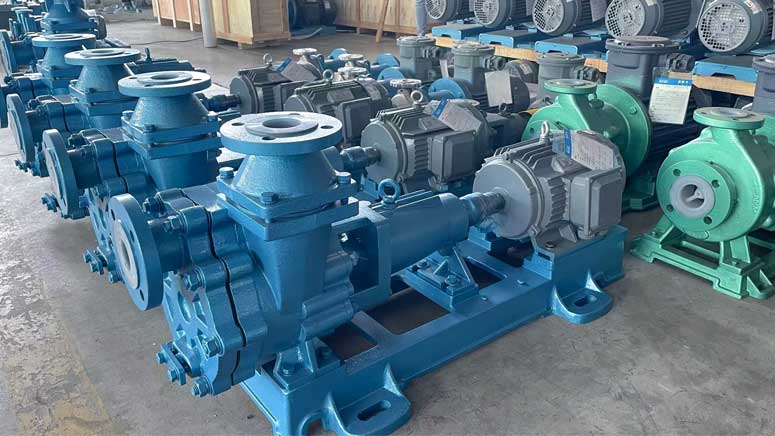Fluoroplastic self-priming pumps are widely used in chemical, pharmaceutical, and environmental industries due to their excellent corrosion resistance and self-priming capabilities. However, users sometimes encounter issues where the pump fails to draw liquid. This article will analyze the reasons why fluoroplastic self-priming pumps fail to draw liquid and provide corresponding solutions to help users better use and maintain these pumps.
Common Causes and Solutions
1. Insufficient Priming During Initial Installation or Restart
Fluoroplastic self-priming pumps require proper priming when first installed or restarted after a long downtime. If the pump chamber does not have enough liquid, the pump cannot function correctly.
Solution: Ensure adequate priming before starting the pump, following the manufacturer's instructions to fill the pump chamber with liquid.
2. Air Leakage in the Suction Line
Any air leakage in the suction line will allow air to enter, disrupting the vacuum and affecting the self-priming capability of the pump.
Solution: Inspect all connections, flanges, and seals in the suction line to ensure there are no leaks. Replace seals or reconnect the line if necessary.
3. Excessive Suction Lift
Each self-priming pump has a maximum suction lift limit. If the installation height exceeds the pump's self-priming capability, the pump will not be able to draw liquid.
Solution: Adjust the pump's installation height according to its specifications to ensure it operates within the maximum self-priming height range.
4. Blocked Suction Line
Debris, deposits, or blockages in the suction line can obstruct normal liquid flow, preventing the self-priming pump from functioning correctly.
Solution: Regularly inspect and clean the suction line to ensure it is unobstructed.
5. Faulty Foot Valve
The foot valve is crucial for preventing backflow. If the foot valve fails or is damaged, liquid can flow back into the suction line, impairing the pump's self-priming capability.
Solution: Inspect the foot valve's condition and repair or replace it if necessary.
6. Damaged Seals Inside the Pump
Damaged seals inside the pump can cause internal leakage, affecting the pump's operation.
Solution: Inspect the seals inside the pump and replace them if damaged.
7. High Viscosity of the Liquid
Self-priming pumps require liquids of a certain viscosity range. If the viscosity of the liquid being transported is too high, the pump's self-priming performance will be affected.
Solution: Ensure the viscosity of the transported liquid is within the pump's allowable range. If necessary, heat the liquid or choose a self-priming pump suitable for high-viscosity liquids.
Preventive Measures
To avoid problems with self-priming pumps failing to draw liquid, users can take the following preventive measures:
Regular Maintenance and Inspection: Regularly inspect the condition of the suction line, foot valve, and seals, and address potential issues promptly.
Proper Operation: Follow the manufacturer's operating instructions to use the pump correctly, ensuring adequate priming during initial installation or restart.
Appropriate Pump Selection: Choose the right self-priming pump based on specific working conditions, ensuring it meets the maximum suction lift and transported liquid viscosity requirements.
Fluoroplastic self-priming pumps are widely used in industries such as chemical processing, but issues with failing to draw liquid can occur. By understanding and addressing the common causes listed above, users can effectively solve this problem and ensure the pump's normal operation. Regular maintenance and proper operation are key to maintaining the high efficiency and stability of fluoroplastic self-priming pumps.





 +86 18130251359
+86 18130251359 teflowpumps@tlpumps.com
teflowpumps@tlpumps.com









 +86+0563-5093318
+86+0563-5093318
